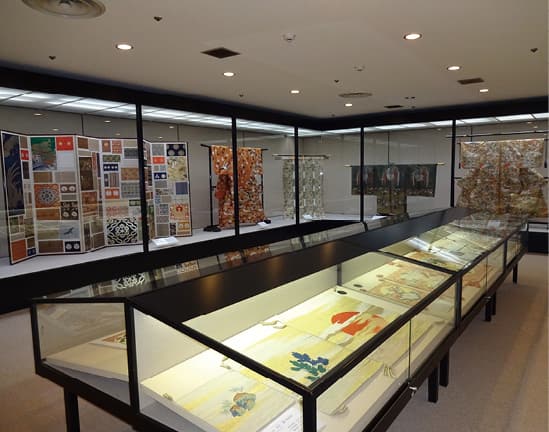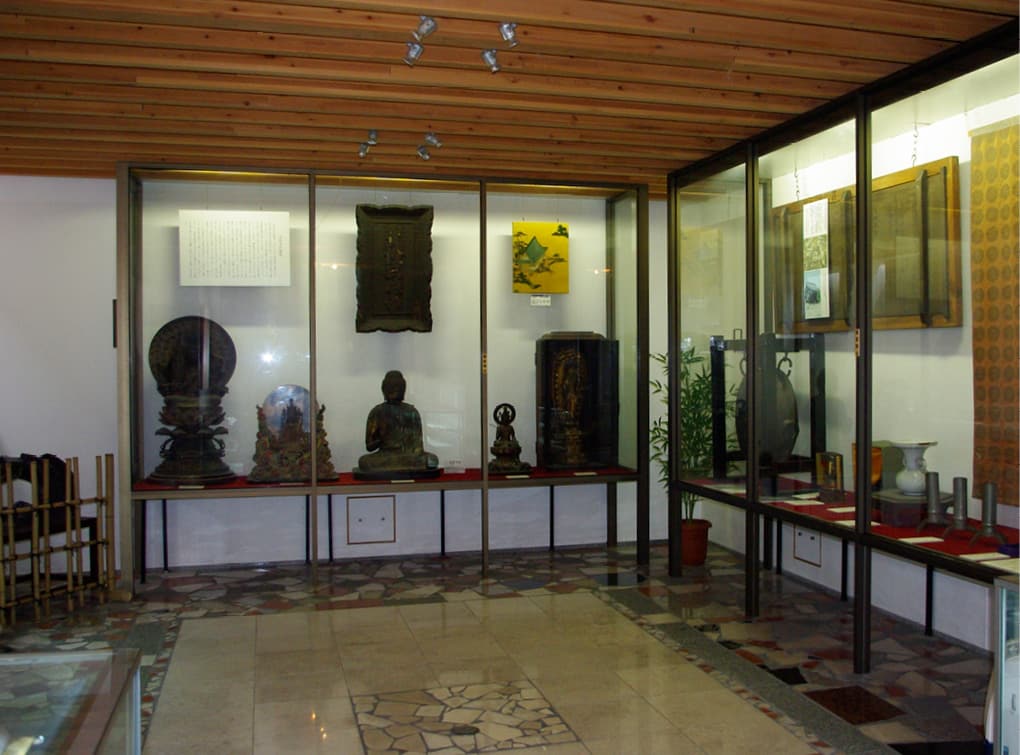Nishijin Textile Center
- Highlight
- The delightful “Kimono Show held 6 times a day together with the skills and beauty of Nishijin textiles
See Nishijin textiles and participate in various tasters
Sericulture (silkworm breeding) and skills in silk weaving arrived in Uzumasa, Kyoto, Japan with the Hata clan in about the 5th or 6th century from Korea. With time, top quality silk robes became popular with the nobles in the Imperial Court. The Onin War (1467~1477) of the Muromachi period drove the craftsmen to seek refuge in Sakai, Yamaguchi and other places, but once peace was restored, they returned to the area where the west (nishi) army had been encamped in Kyoto, hence the textile became known as “Nishijin-ori”, or west camp weave.
The center stages daily “Kimono Show” performances as well as displaying Nishijin archive materials and textile products. Also, there are hand weaving demonstrations and a Table Center where visitors can actually try some weaving, or visitors can try on maiko kimono or the ceremonial robes of court ladies, and even enjoy a stroll around Kyoto in certain gowns. The center also retails an assortment of textiles from small items right through to sashes and other garments.
Thus, visitors can enjoy a broad range of events related to a local industry packed with tradition. (Participation in tasters is charged, and a reservation is required.)



Weft and warp are woven together like a wrap, but what is the unique signature of weft in Nishijin textiles?
| Address | Horikawa-dori Imadegawa-Minami-iru, Kamigyo-ku |
|---|---|
| TEL | 075-451-9231 |
| FAX | 075-432-6156 |
| URL | https://nishijin.or.jp/ |
| Hours | 1/3-31/10 10:00-18:00, 1/11-28/2 10:00-17:00 |
| Closed | 29/12-3/1 |
| Adm | Free, Trying on kimonos or any other robes are charged in all cases (reservation required) |
| Access | Very close to Horikawa-Imadegawa Stop of City Bus |
| Parking | Available (Charged) |

Facilities near by

Mibu Temple Cultural Properties Exhibition Hall (Mibu Temple History Library)
A temple closely associated with Mibu Kyogen and Shinsen-gumi

Kyoto Aquarium
Life Connected by Water

The Shimadzu Foundation Memorial Hall
History of the science that underpinned the modernization of Kyoto

Chiso Gallery
A collection passed down through the ages as the inheritance of a long-established kyoyuzen dyeing company
